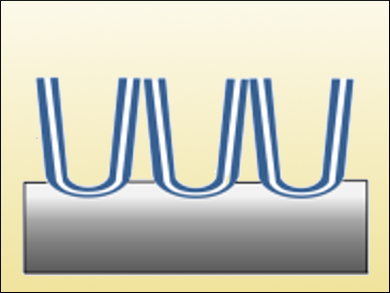Self-organization of the semiconductor TiO2 into nanotube layers is beneficial for the material’s performance in solar cells and photocatalytic water splitting. This is due to the unique geometry and electronic properties of the aligned nanostructures. Nanotube layers in the form of free-standing membranes are even more advantageous.
Patrik Schmuki, University of Erlangen-Nuremberg, Germany, and colleagues used an anodic growth sequence and subsequent controlled chemical etching to grow robust free-standing TiO2 nanotube layers. They have a thickness of 1.8 up to 50 µm. The product can be transferred as self-standing membranes onto quartz slides without the use of an adhesive layer.
Detailed optical characterization of these highly ordered nanostructures yields information that can be used to optimize the design of such nanotube layers in any photo(electrochemical) application. A series of wavelength dependent light absorption coefficients were, for example, determined that can be used to assess how the incident light is attenuated as it passes through anatase TiO2 nanotube layers.
- Free standing membranes to study the optical properties of anodic TiO2 nanotube layers,
Gihoon Cha, Patrik Schmuki, Marco Altomare,
Chem. Asian J. 2016.
DOI: 10.1002/asia.201501336



